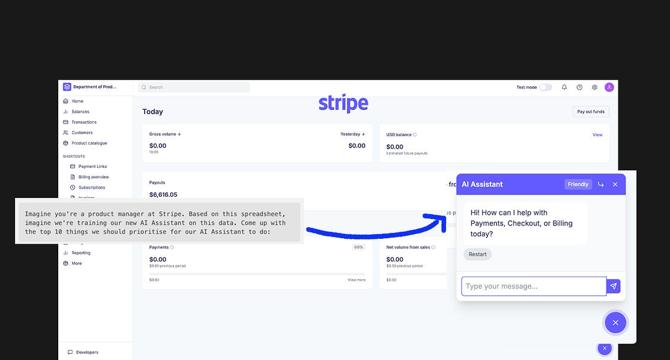Department of Product
2w
373

Image Credit: Department of Product
How to build an AI Assistant Prototype
- The article discusses using vibe coding tools to build AI Assistant prototypes for products, exploring 5 different approaches to AI Assistants like AI Assistant chat pop up and contextual actions.
- It emphasizes the importance of defining what tasks the AI Assistant should perform before starting the prototype.
- By providing context to AI tools with input like codebase copies and data from analytics platforms, companies can train AI Assistants effectively.
- Through data sources like error logs, call center logs, and feature sets, ideas for functionality and design of AI Assistants can be generated.
- The article showcases how AI tools can suggest priorities for AI Assistants like fraud detection and usage analytics insights.
- It then delves into how design choices can be influenced by the AI Assistant's capabilities and provides examples like conversational clarity and proactive guidance.
- Grok, an AI tool, helps in creating Product Requirement Documents (PRDs) and prompts for building AI Assistant prototypes.
- Tools like Lovable and Replit are used to transform PRDs into prototypes, showcasing features such as support for troubleshooting payments and toggles between friendly and technical modes.
- The article concludes by mentioning that building AI Assistants involves multiple approaches, with the prototype of an AI Assistant capable of contextual actions being one of the discussed types.
- The Knowledge Series offers detailed guides on building AI Assistants and other technical topics for paid subscribers.
Read Full Article
22 Likes
For uninterrupted reading, download the app